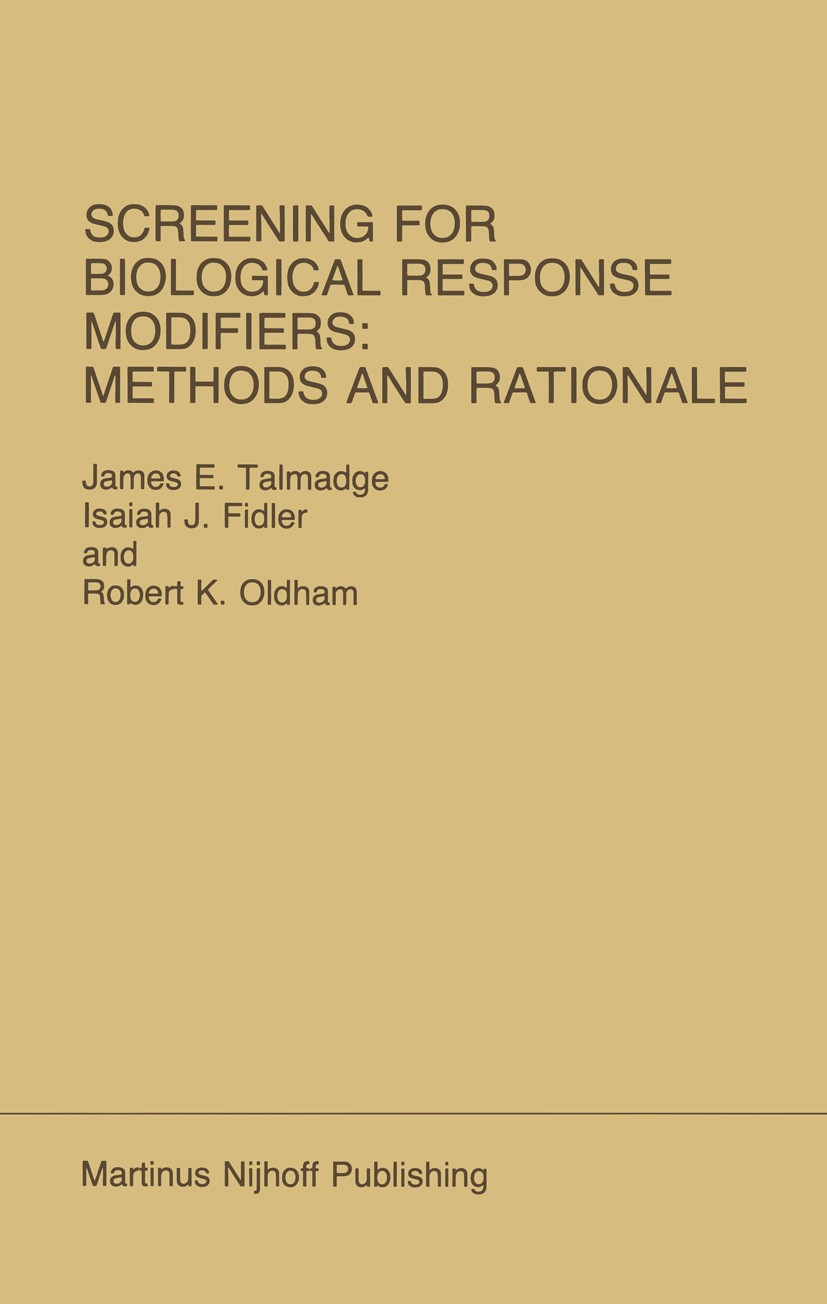| 书目名称 | Screening for Biological Response Modifiers: Methods and Rationale | | 编辑 | James E. Talmadge,Isaiah J. Fidler,Robert K. Oldha | | 视频video | http://file.papertrans.cn/863/862893/862893.mp4 | | 丛书名称 | Developments in Oncology | | 图书封面 |  | | 描述 | The observation in the 1950s that nitrogen mustard and other toxic chemicals could induce antitumor responses in patients with refractory lymphoma initiated a massive search for active chemotherapeutic agents. The initial observations stimulated a search for new chemotherapeutic agents which might have increased antitumor activity with less toxicity for normal tissues. To aid in the search for these new chemicals and to attempt to distinguish among the many toxic chemicals which might be candidates for clinical studies, the National Cancer Institute, the pharmaceutical industry, and the cancer research laboratories of most Western nations developed systems for "screening" drugs for antitumor activity. Perhaps the most extensive screening program was established by the National Cancer Institute (1). This screening program has evolved over the last two decades, an evolution which has been repeatedly reviewed (2-5). Various screening programs in use have examined over 500,000 compounds as potential anticancer agents. From these, there are now approximately forty anticancer drugs in clinical use. The utiliy of these compounds and their toxicities have been reviewed on many occasions. I | | 出版日期 | Book 1985 | | 关键词 | cancer; cancer research; lymphoma; screening | | 版次 | 1 | | doi | https://doi.org/10.1007/978-1-4613-2591-8 | | isbn_softcover | 978-1-4612-9624-9 | | isbn_ebook | 978-1-4613-2591-8 | | copyright | Martinus Nijhoff Publishing, Boston 1985 |
The information of publication is updating

|
|
 |Archiver|手机版|小黑屋|
派博传思国际
( 京公网安备110108008328)
GMT+8, 2025-12-18 15:04
|Archiver|手机版|小黑屋|
派博传思国际
( 京公网安备110108008328)
GMT+8, 2025-12-18 15:04


